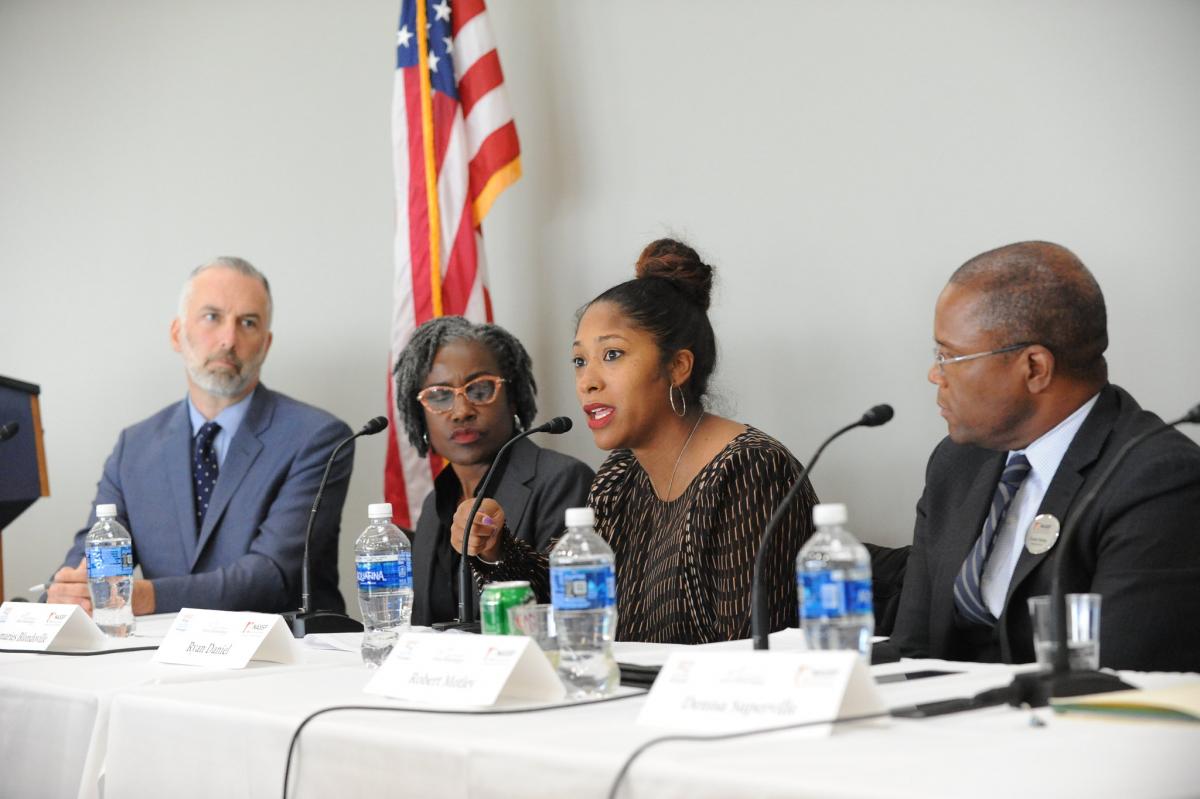Make the Principal Pipeline a Priority
Principals and leaders from a successful principal pipeline school district talk benefits to the program with legislators.
Principals and leaders from a successful principal pipeline school district talk benefits to the program with legislators.
Communicator
October 2019, Volume 43, Issue 2
The role of the principal has expanded significantly in recent decades, which has brought new demands from parents, faculty, and legislators. To meet these demands, principals must be prepared to enter the profession with the skills to effectively manage a variety of tasks to ensure success within their school. Quite simply, there are no great schools without great principals. But how do we ensure that principals are prepared to drive success in their schools? What does effective principal preparation look like and what are districts currently doing that have yielded positive results?
To help answer these questions, NAESP, with the American Federation of School Administrators and the National Association of Secondary School Principals, held a congressional briefing on Capitol Hill on Thursday, Oct. 17.
“Principal Pipelines: Not Just a Pipe Dream” featured a panel of leaders in education—Robert Motley, principal of Atholton High School in Columbia, Maryland; Ryan Daniel, principal of Chillum Elementary School in Hyattsville, Maryland; and Damaries Blondoville, senior project manager, Office of Talent and Development, Prince George’s County Public Schools in Maryland—who have seen success with a principal pipeline. Matthew Clifford, principal researcher at the American Institutes for Research, give opening remarks, and Denisa Superville, staff writer for Education Week, moderated the panel.

Maryland Principal and NAESP member Ryan Daniel (center) discusses her own principal preparation with briefing attendees and panelists (Left to right: Matthew Clifford, Damaries Blondoville, and Robert Motley)
The main takeaway: Principal pipelines are affordable and effective. According to a study from The Wallace Foundation, districts spent only $42 per student per year to operate and enhance their principal pipelines. That’s just 0.4 percent of the annual district budget spent on principal pipelines. Plus, funds already exists through Title I and Title II to establish these programs.
To learn more, watch the livestream of the event on the NAESP Facebook page and follow #PipelineChat on Twitter as we continue this important conversation.
—
Copyright © 2019. National Association of Elementary School Principals. No part of the articles in NAESP magazines, newsletters, or website may be reproduced in any medium without the permission of the National Association of Elementary School Principals. For more information, view NAESP’s reprint policy.

